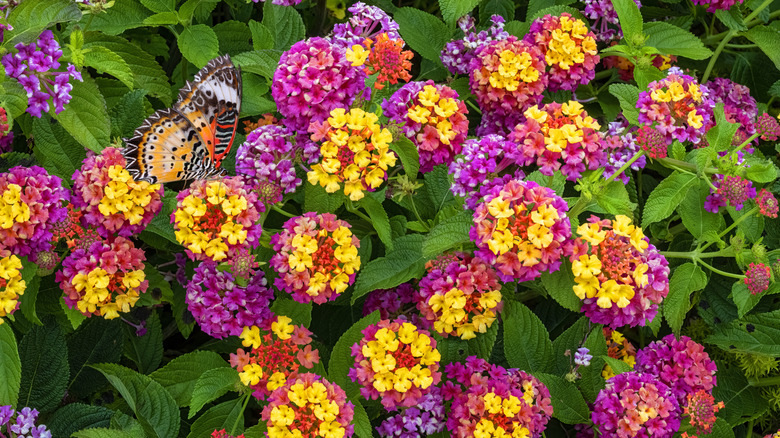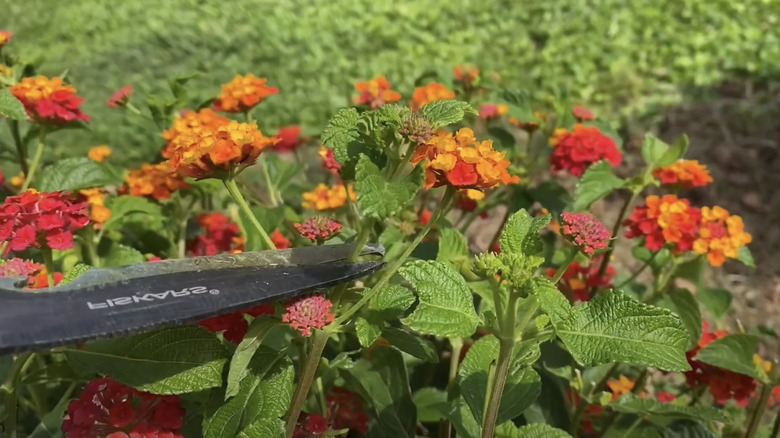The Best Time To Prune Lantana For Blooms That Will Last
The mixed orange, yellow, pink, and white blooms of common lantana (Lantana camara) are hard to ignore. The genus Lantana includes more than 150 species and cultivars of annual and perennial flowering shrubs, with common lantana among them. Native to tropical Africa and America, these durable, heat-tolerant plants bloom continuously from summer through to the first fall frost. Though lantana is commonly grown as an annual, it is perennial in USDA Hardiness Zones 10 to 11. To make the most of this multicolored beauty, prune your lantana bush in the spring and deadhead it throughout the flowering season to ensure blooms last throughout the summer and fall.
Common lantana is typically a large plant that can reach heights of 10 feet. It grows vigorously and can take over a landscape or outcompete other plants for resources. It's no wonder this plant is called weedy in tropical America. Lantana is considered invasive in a number of states, including Texas, Alabama, California, and Georgia. However, its spread can be managed by deadheading. You can also choose to plant sterile varieties, such as 'Gold Mound' and 'New Gold,' that will not spread. To ensure healthy, controlled growth that produces long-lasting flowers, you need to prune lantana bushes at the right time of year and in the right way. This includes annual pruning and ongoing maintenance. Trimming your bushes in the early spring, after they have survived the winter and before the growing season, will keep your lantana plants blooming all summer long.
Prune lantana bushes in early spring or late winter for abundant flowers
To keep lantanas healthy with blooms that last, complete the main annual pruning in the early spring. However, you can also prune your shrub in late winter if that better fits into your gardening schedule. The most important factor to consider is winter hardiness. Freshly cut lantana branches are susceptible to the cold and damp of winter. This means pruning in the fall is out of the question. Whether you prune in spring or winter, cut back the old and dead branches by about one-third of their height and, if needed, their width.
You can safely trim 1 to 3 inches from each stem while the plant is actively growing to maintain a tidy appearance and encourage new growth for longer flowering. To keep your perennial in blooming more than once for a colorful garden, deadhead spent lantana flowers throughout the flowering season. If your lantana is growing in a container or in the ground, it is a good idea to apply a slow-release, balanced fertilizer after an annual pruning. This will help the plant recover from its trim and regrow stems, leaves, and flowers.

